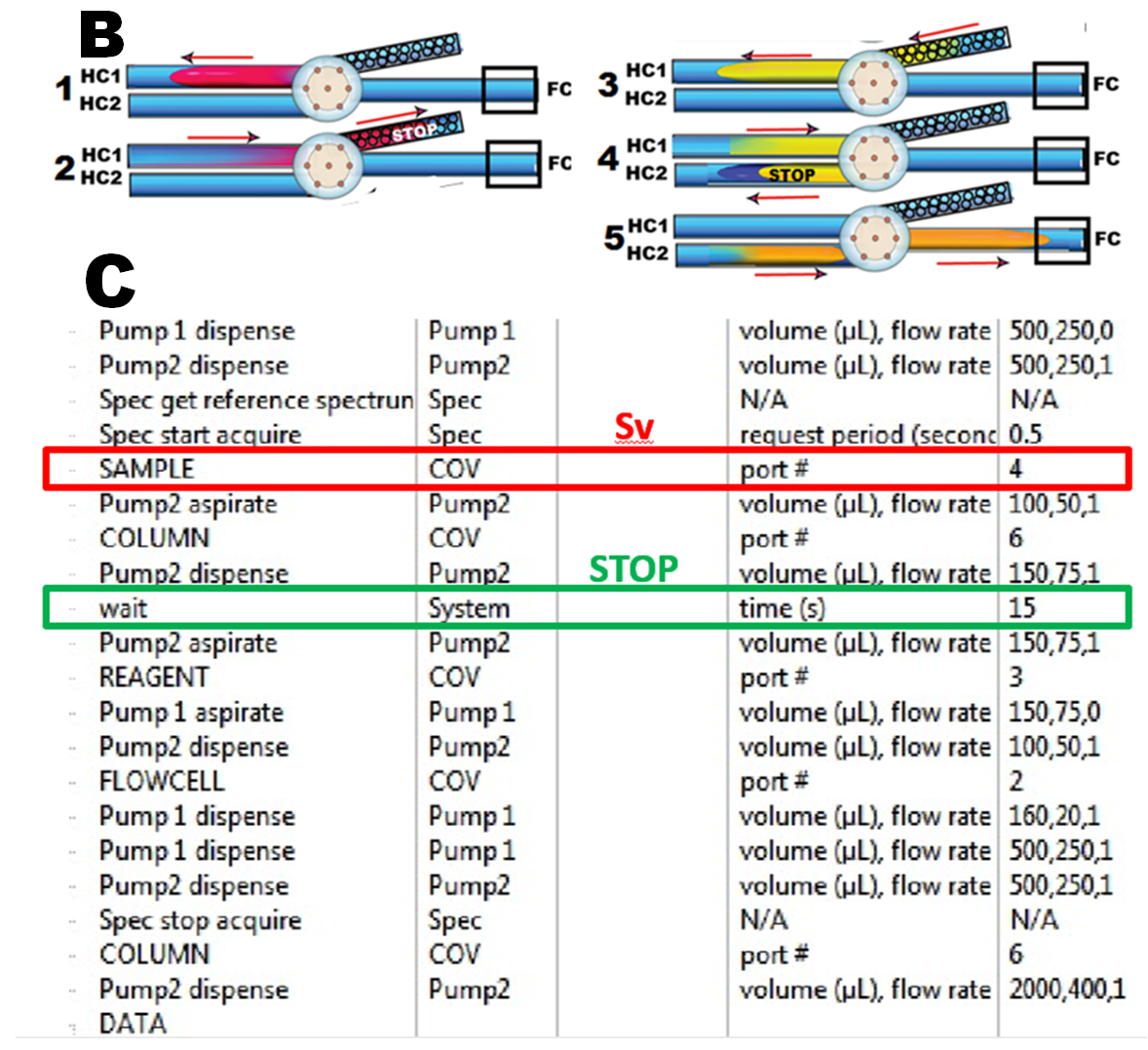pFI: Single Reagent on Column Assay, Nitrate
Three Transfers
This assay is based on reduction of nitrate to nitrite on cadmium column, followed by conversion of nitrite, by Gries reaction (A), into red azo dye monitored at 540nm.
Therefore automation of nitrate assay in pFI mode requires, the following sequence of microfluidic manipulations (B):
1) sample (red) is aspirated into HC1,
2) sample is transferred to Cd column,
3) resulting nitrite (yellow) is transferred back into HC1,
4) Gries reagent (green) is aspirated into HC2, simultaneously with nitrite transferred from HC2, 5/ the resulting azo dye (orange) is flown trough the flow cell for monitoring.
Reaction rates of nitrate reduction and of dye formation influence sensitivity of this assay, and its sampling frequency. Gries reaction is very fast (1.2.32.) and therefore the assay protocol (C) does not need to include stop period in step #4. Kinetics of on column reduction depend on column geometry, volume and surface area of the reductor. In 10 cm long column (A), the reduction proceeds very fast, as revealed by the experiment where sample was held on column for increasing periods of time (D). Elevating the temperature of the flow system from 30 C to 50 C did not affect the reaction yield, as this was, surprisingly, already close to 100% at 0 sec long stop time at 30 C.
Note that 0 stop time is not 0sec incubation time, since activation of pumps and valve by software requires about 2 seconds. In addition transport of sample into and from the column also adds to incubation time.
1.2.37.











